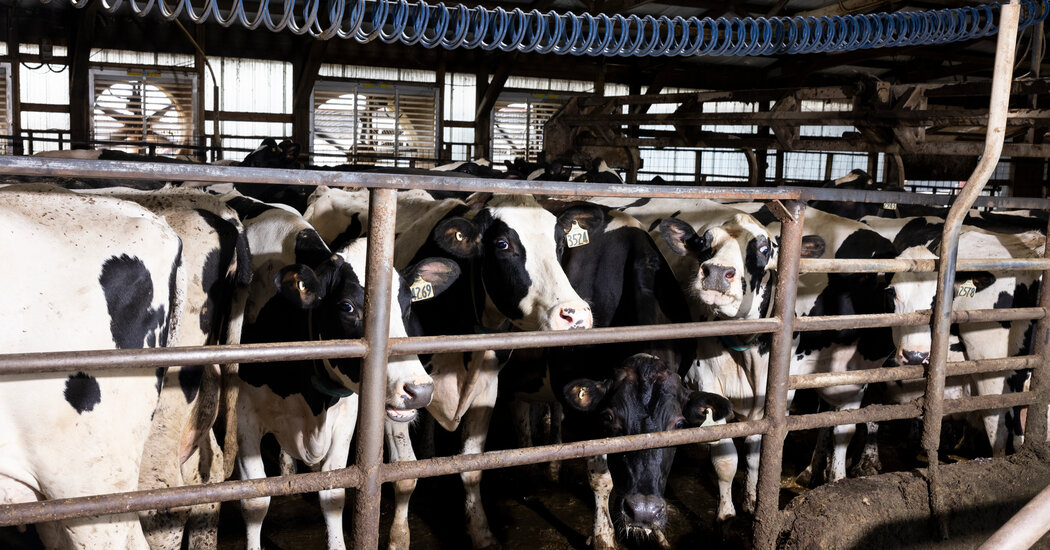Three dairy veterinarians, including one who worked only in states with no known bird flu outbreaks in cows, had recent, undetected bird flu infections, according to a new study from the Centers for Disease Control and Prevention. The results are based on antibody testing of 150 veterinarians working in 46 U.S. states.
The findings were not entirely surprising, experts said, but did suggest that the virus, known as H5N1, could be infecting cows and people in more states than have been officially reported.
“We do not know the extent of this outbreak in the U.S.,” said Seema Lakdawala, a virologist at Emory University. “There are clearly infections happening that we’re missing.”
Since the bird flu outbreak in dairy cows was first reported last March, the virus has been confirmed in more than 950 herds in 16 states. It has also been detected in 68 people, 41 of whom had contact with sick cows. Most people have had mild symptoms.
The new study, which was published in the C.D.C.’s flagship Morbidity and Mortality Weekly Report, was initially slated for publication several weeks ago but was delayed by the Trump administration’s pause on public communications from health and science agencies.
“It’s important for public health preparedness that we have this data,” said Dr. Nahid Bhadelia, the director of the Boston University Center on Emerging Infectious Diseases.
The study was conducted at a veterinary conference last September; participating vets practiced in 46 different states, as well as in Canada. Of the 150 veterinarians enrolled in the study, 25 of them reported having worked with cows who were either known to have or suspected of having bird flu.
Three of the vets tested positive for antibodies to the virus. None of those three vets had reported working with cows believed to have bird flu. (One had worked with infected poultry.) None recalled any flulike symptoms.
One of the vets worked with cows only in Georgia and South Carolina, states that had not reported any affected herds.
“I think we’ve all suspected that there are many more states, potentially, where the virus is that are not being detected,” Dr. Bhadelia said.
Dr. Lakdawala said that she was surprised that none of the 25 veterinarians who knew that they had worked with infected cows had tested positive for antibodies. But it’s possible that those who knew they were working with infected animals “were taking more precautions,” she said.
None of the three vets who tested positive for antibodies reported wearing masks or goggles. Such precautions are not recommended when working with healthy animals in unaffected regions, the study notes.
Precisely how veterinarians are being infected remains unclear, and vets may have less contact with virus-laden milk than the farm workers who spend their days in milking parlors, Dr. Lakdawala said.
“The vets that we’ve talked to on these farms are involved in all aspects of care for these animals,” she said. “They’re all over these cows, looking at everything.”
The findings highlighted the need for far more testing, experts said, including testing of asymptomatic dairy workers and bovine vets, as well as expanded testing of the nation’s milk supply.
The U.S. Department of Agriculture announced a national program to test bulk samples of milk in December. As of Feb. 7, 40 states were enrolled and actively conducting testing. In Nevada, the bulk testing of milk recently revealed that dairy herds had been infected with a new version of the virus, distinct from the one that had been spreading in dairy cows over the past year.
“The states that haven’t onboarded bulk milk testing should do that, just not assume that because they haven’t had infected herds reported that they have a little bit of leeway,” Dr. Bhadelia said.
When the study was conducted last fall, the virus had been detected in dairy herds in 14 states, as well as in 14 people, four of whom had contact with dairy cows.
Apoorva Mandavilli contributed reporting.




